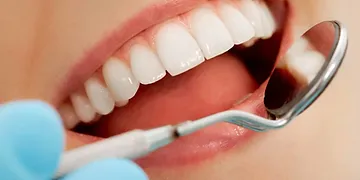Oral and oropharyngeal cancer affects nearly 50,000 Americans each year. Even though oral cancer is one of the less common types of cancer, it remains difficult to manage and treat because it can go unnoticed in its early stages. Regular exams and visits to the dentist are crucial in early detection, prevention and management.
Warning Signs of Oral Cancer
Oral cancer is typically painless in its early stages, but can become more painful in its later stages. Inform your dentist immediately if you observe:
- Changes in the way your teeth and bite fit together;
- Oral sores or lesions that do not heal within two weeks or bleed easily;
- Lumps, thickening of the skin, rough spots, crusty, ulcerated or eroded areas of the face or mouth;
- Difficulty swallowing, chewing, speaking or moving of your jaw or tongue;
- Persistent numbness or tingling of your lips, tongue or gums;
- Persistent sore throat or a feeling that something is caught in the throat;
- Hoarseness, a change in voice or earaches.
Oral Cancer Screenings
The Dentist and Hygienist regularly look, check and feel for tissue changes, discolorations, lumps and irregularities in your mouth and surrounding soft tissues. An oral cancer screening is part of every routine dental checkup and cleaning, even if you have no symptoms or risk factors.
Regular check-ups and screenings help establish a healthy baseline and aid in the detection and management of potential changes or problem areas.
What are the risk factors for oral cancer?
The risk factors for oral cancer include:
- Tobacco use
- Human Papilloma Virus (HPV) Infection
- Excessive use of alcohol
- Excessive sun exposure (lips)
- Previous head and neck cancer diagnosis
- Family History
Role of the Human Papilloma Virus (HPV)
The Human Papilloma Virus (HPV) is the most common sexually transmitted disease in the U.S. with 14 million new cases each year. According to the Centers for Disease Control, there are more than 40 different types of HPV. Most forms of HPV are cleared from the body by the immune system without causing any health problems.
Some types of HPV affect the mouth and throat. Low-risk strains can cause mouth or throat warts, but high-risk strains are associated with head and neck cancers. Data from the CDC indicates that about 7% of people have oral HPV, but only 1% have the type of oral HPV found in head and neck cancers.
HPV-positive head and neck cancers typically develop in the throat or at the back of the tongue and near or in the folds of the tonsils (which makes them difficult to detect).
The CDC recommends that 11 to 12 year old boys and girls get the HPV vaccine to reduce the risk of cervical and other less common genital cancers. This vaccine is also believed to help prevent head and neck cancers, since the vaccine prevents the initial infection with HPV types that can cause oral cancers.
Oral Cancer Prevention
To help reduce the risk of oral cancer:
- Abstain from using all forms of tobacco, nicotine, e-cigarettes and recreational drugs;
- The Centers for Disease Control and Prevention recommends that all pre-teen boy and girls ages 11 to 12 should be vaccinated for HPV. This may aid in reducing the risk of oral cancer. The vaccine is also recommended for males and females ages 13 to 26 if they haven’t received them already.
- Because successful treatment and rehabilitation of oral cancer is dependent upon early detection, it is very important to maintain regular dental visits.
- Avoid excessive sun exposure and alcohol consumption;
As with all forms of cancer, there is a family history component, along with an environmental component. Increased knowledge, early detection and prevention of the disease is our best hope for management.
(Excerpts from the American Dental Association, Academy of General Dentistry Websites & National Institutes of Health)


